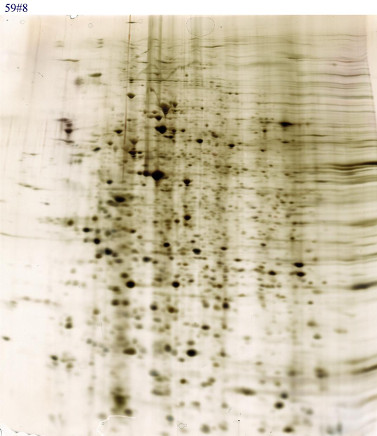SILVER STAINING
Our excellent silver stain is based on the ammoniacal silver/formaldehyde method of Oakley et. al. (Anal. Biochem.105: 361, 1980). This method involves preliminary glutaraldehyde treatment of the slab gel to fix proteins by cross linking. The pre-treatment also adds glutaraldehyde side chains to the proteins, increasing sensitivity since these groups are sites for silver deposition (Dion A, and Pomenti A, Anal. Biochem. 129:390, 1983). 
We offer both standard silver staining and special silver staining for mass spectrometry. Follow the link for pricing details.
Call 800-462-3417 or email 2d@kendricklabs.com for a price quote without obligation.